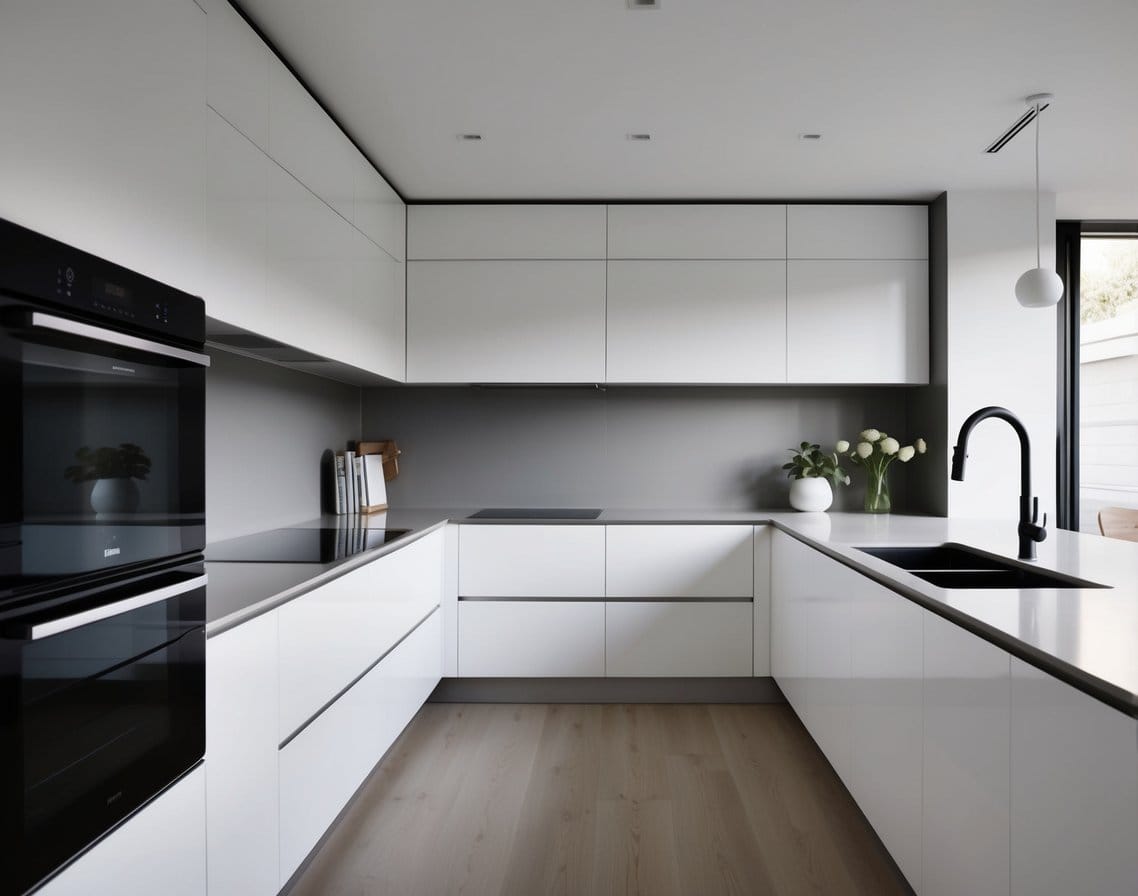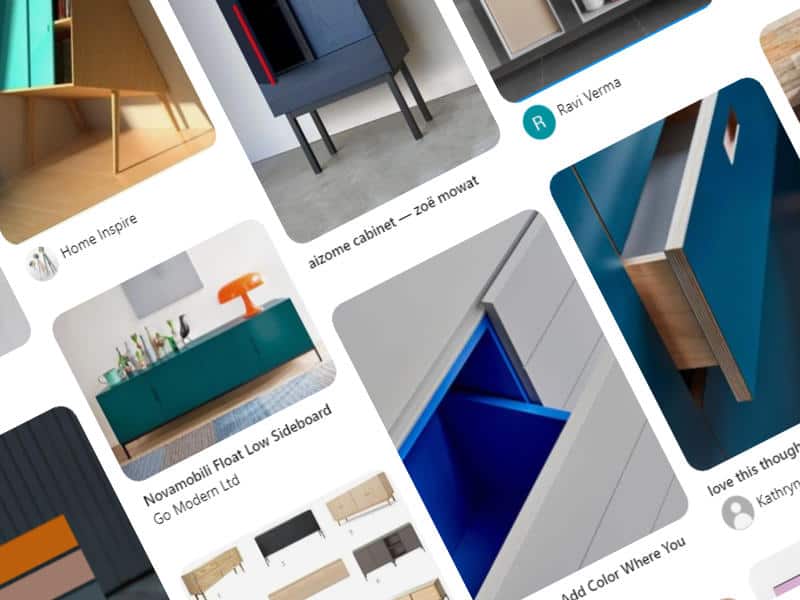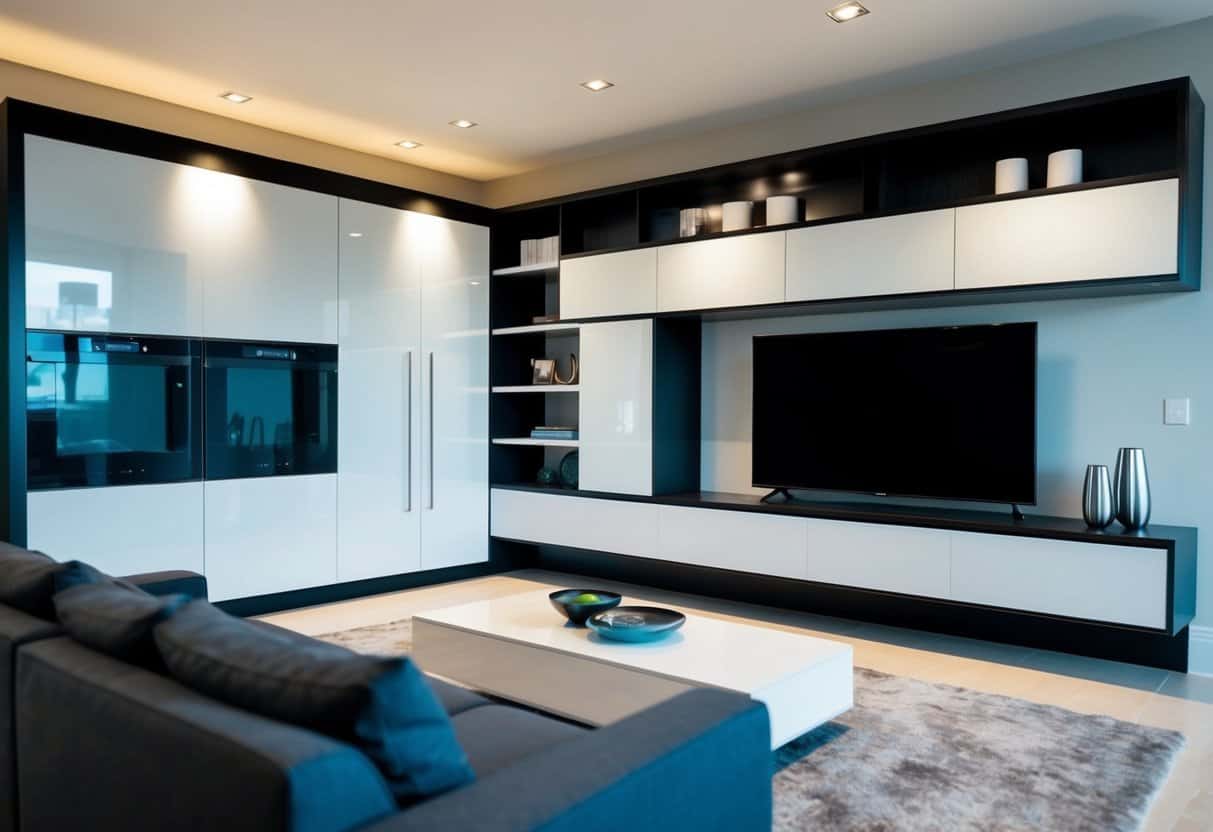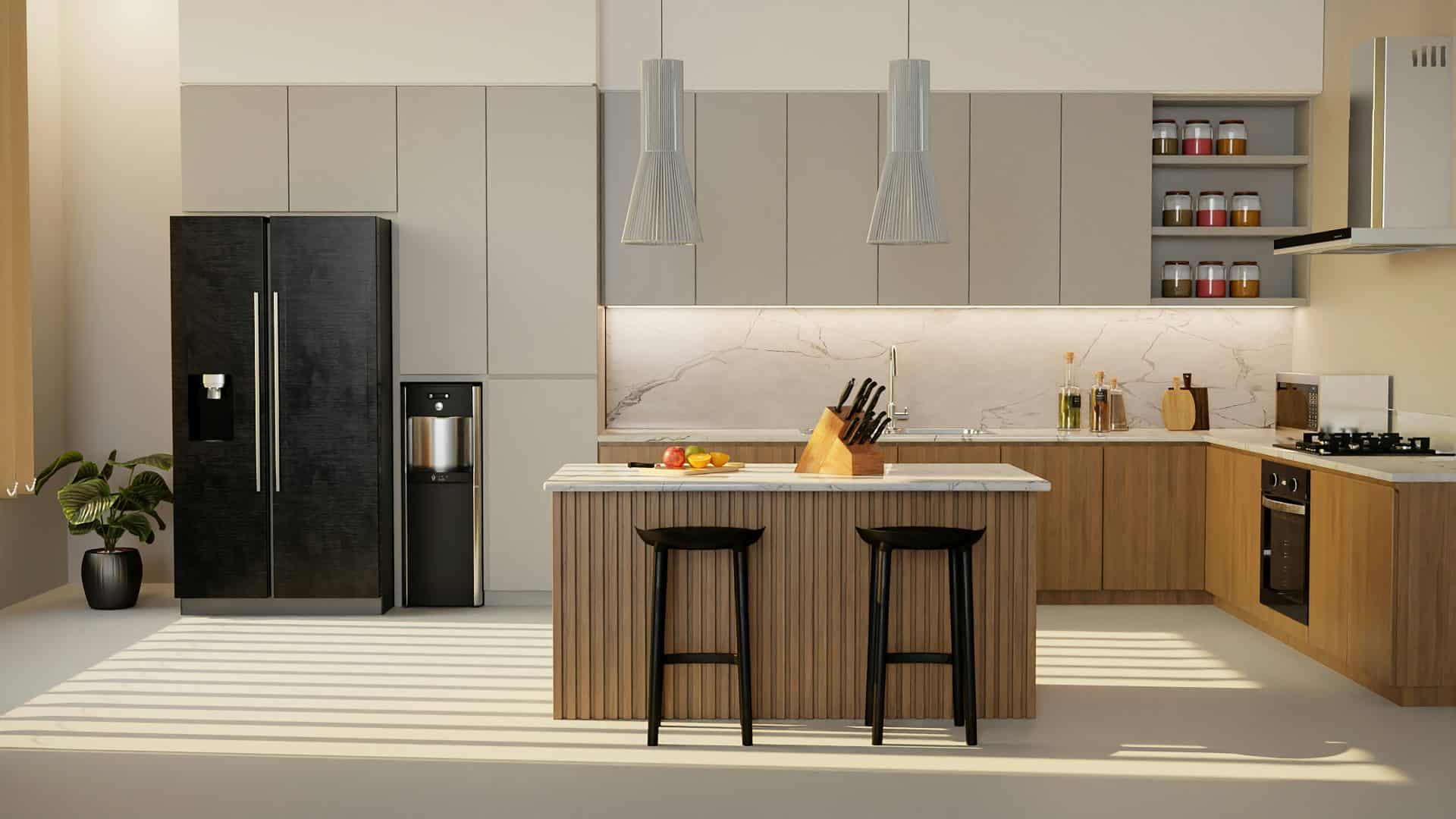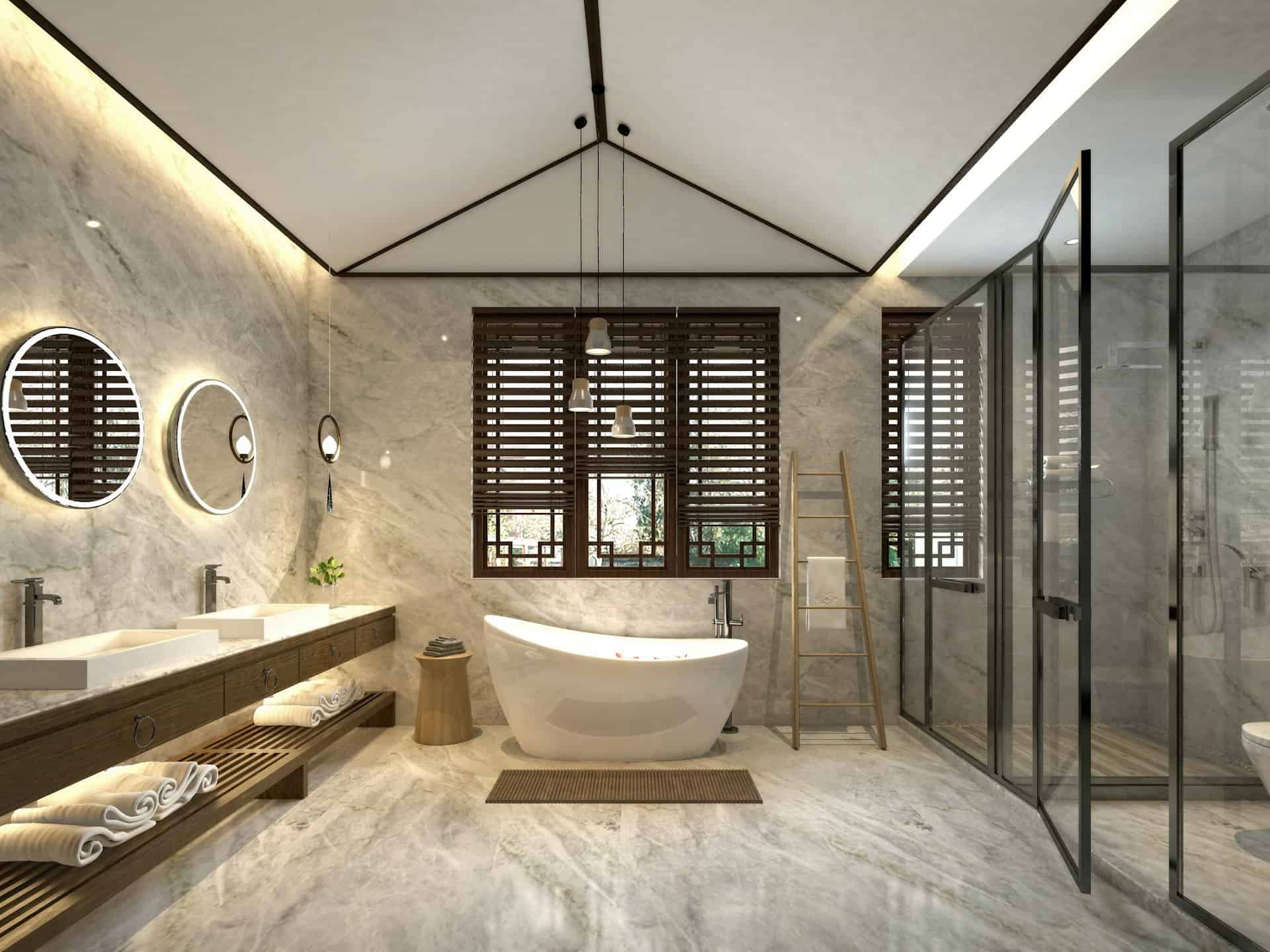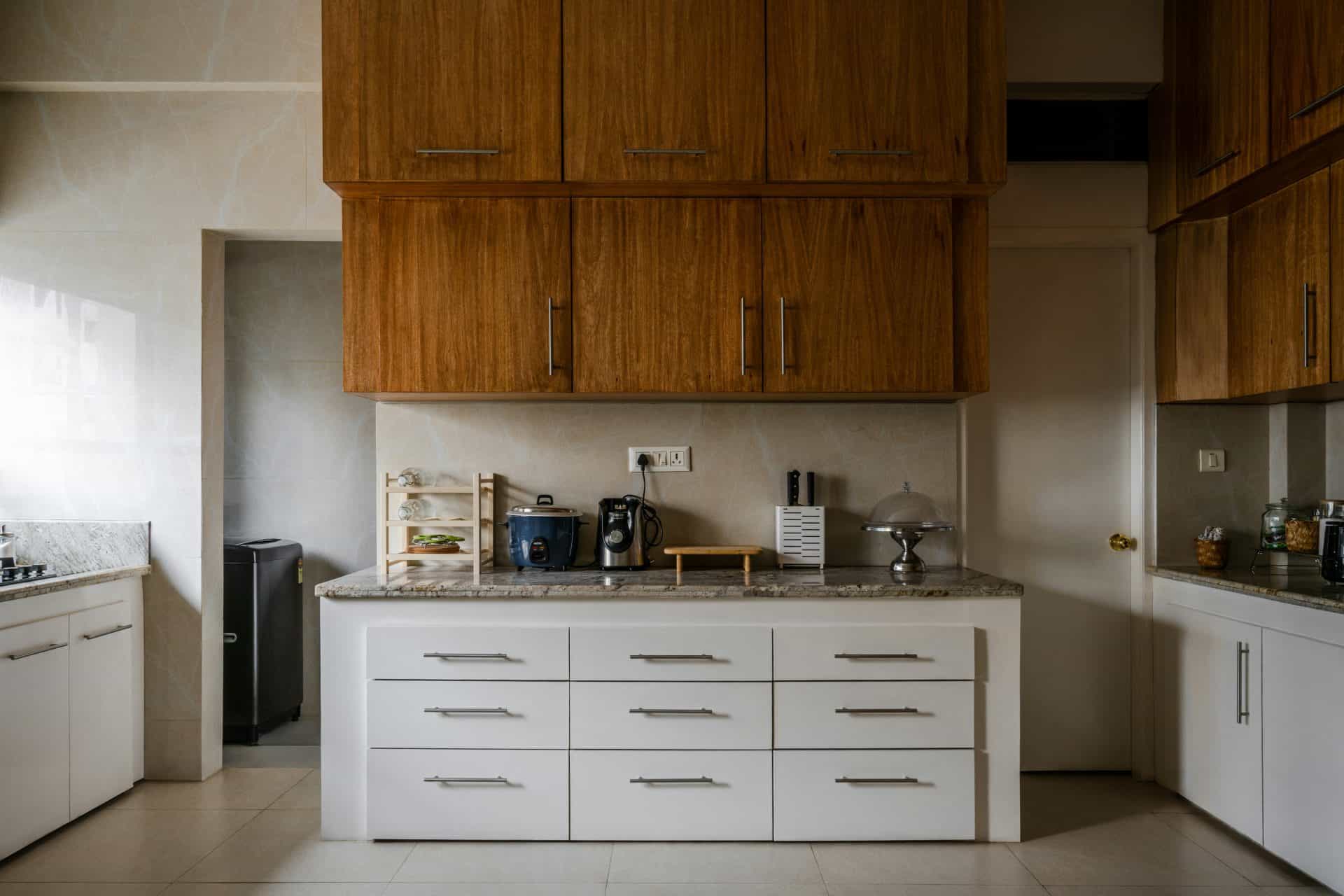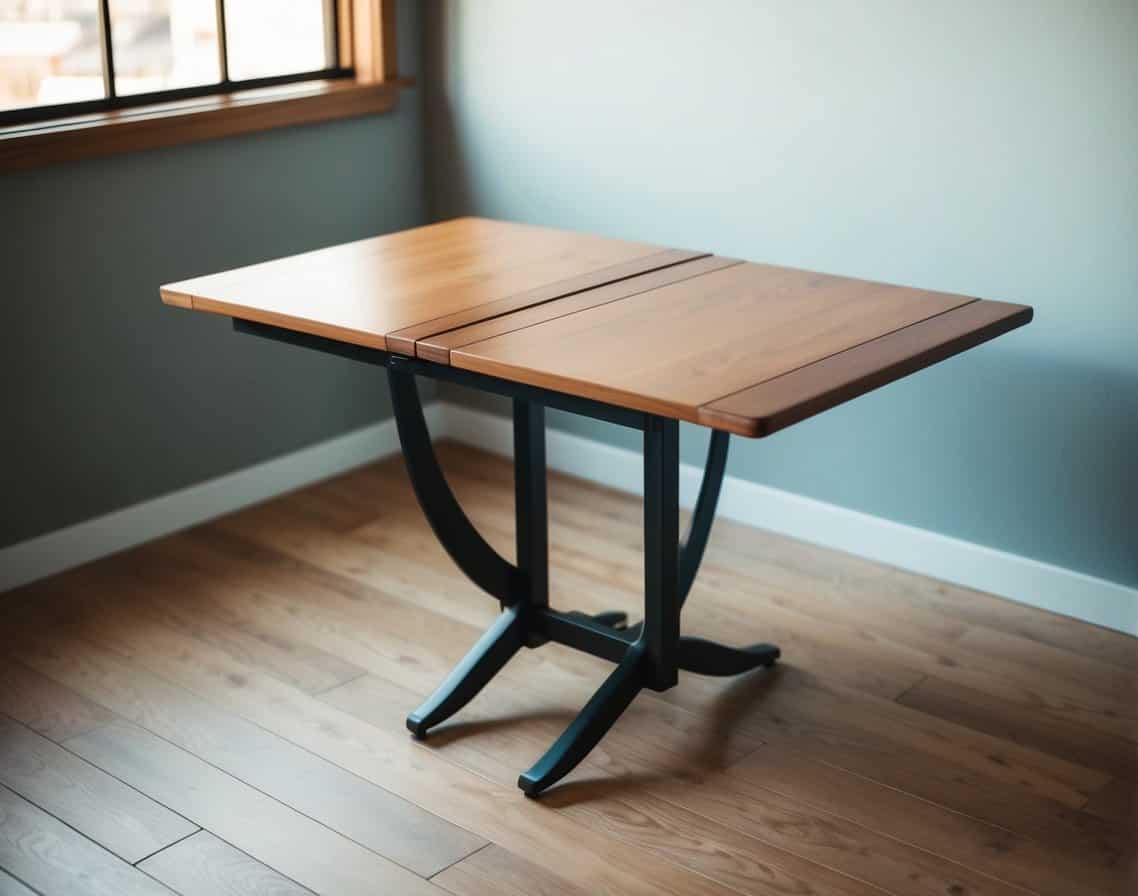A minimalist kitchen brings peace and efficiency to your daily cooking routine.
Creating a minimalist kitchen means keeping only essential items, choosing clean lines for kitchen cabinets and countertops, and maintaining clutter-free spaces that spark joy while cooking.
The simple beauty of this design style makes everyday tasks easier and more enjoyable.
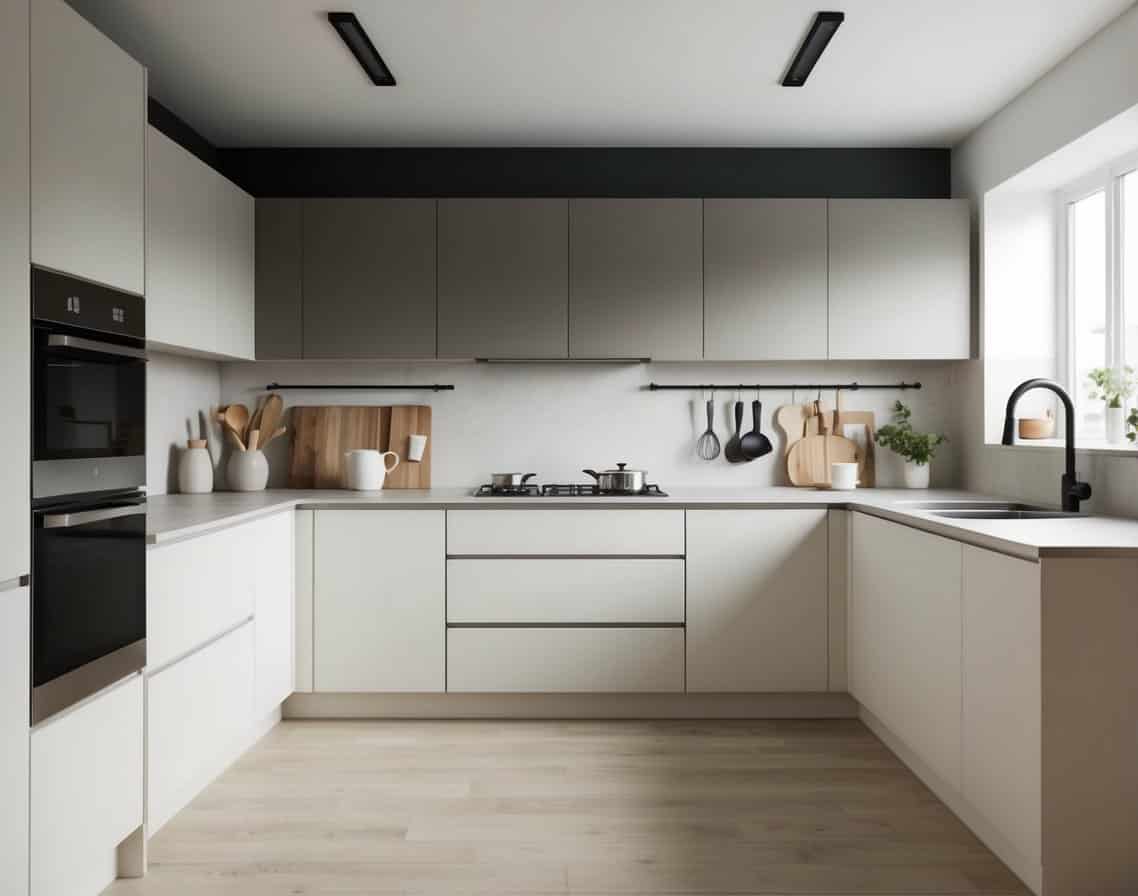
Creating a minimalist kitchen starts with smart organization and thoughtful choices about what stays and what goes.
By removing unnecessary gadgets and keeping only the tools we truly need, we open up space for both cooking and living.
A well-designed minimalist space combines sleek storage solutions with practical functionality.
Introduction to Minimalist Kitchen Design
A minimalist kitchen design is a style that emphasizes simplicity, functionality, and clean lines. It’s a design approach that focuses on eliminating clutter and visual noise, creating a peaceful and efficient cooking space. Minimalist kitchens are perfect for those who value simplicity, sustainability, and ease of use. By prioritizing essential items and thoughtful organization, a minimalist kitchen can transform your cooking experience into a serene and enjoyable activity.
What is a Minimalist Kitchen?
A minimalist kitchen is a kitchen that has been intentionally simplified, with a focus on functionality and ease of use. It’s a space that has been decluttered and organized, with only the essential items on display. Minimalist kitchens often feature custom cabinetry, a minimalist palette, and a clutter-free environment. The goal is to create a space where everything has a purpose and place, reducing visual clutter and enhancing the overall aesthetic. By incorporating clean lines and thoughtful storage solutions, a minimalist kitchen becomes a haven of efficiency and tranquillity.
Essential Principles Of Minimalist Kitchen Design
A minimalist kitchen combines clean design elements with practical functionality to create a calming and efficient space.
The right balance of simplicity, color, materials, and spatial planning works together to achieve this refined aesthetic.
Embracing Simplicity
A minimalist kitchen prioritizes simplicity by keeping only essential items visible and avoiding cluttered plain site. We recommend storing appliances and tools inside cabinets when not in use.
Open shelving should display just a few carefully chosen pieces rather than packed collections. This prevents visual clutter and maintains clean sightlines.
Each item in the kitchen needs to serve a clear purpose. We suggest regularly evaluating your kitchen tools and removing duplicates or rarely-used items.
Key elements to maintain:
Clear countertops
Limited decorative items
Hidden storage solutions
Organized cabinet interiors
Choosing a Neutral Color Palette
Clean and calm spaces rely on a refined color scheme that complements a minimalist interior. White, beige, gray and black form the foundation of minimalist kitchen design.
We recommend choosing 2-3 neutral shades as your base colors. Add subtle contrast through different textures rather than bold accent colors.
Popular neutral combinations:
Warm white + light wood
Soft gray + white
Black + white + natural wood
Greige + charcoal
Incorporating Natural Materials and Light
Natural elements bring warmth and character to sleek minimalist spaces. Incorporating warm tones can enhance the inviting atmosphere of a minimalist kitchen. Large windows and glass doors maximize daylight.
We suggest using materials like:
Wood for cabinet fronts or floors
Stone or concrete countertops
Matte metal fixtures
Textured tile backsplashes
Position workspaces near windows when possible. Use sheer window coverings to filter harsh light while maintaining brightness.
Creating Clean Lines and Open Spaces
Streamlined design elements create visual harmony. A central island can serve as a focal point, enhancing both functionality and aesthetics in a minimalist kitchen. We focus on horizontal and vertical lines through cabinet placement and architectural details.
Handle-free cabinets and integrated appliances maintain smooth surfaces. Allow space between elements to prevent a crowded feel.
Ways to maintain clean lines:
Flush cabinet fronts
Consistent spacing between elements
Hidden appliances
Minimal hardware
Built-in storage solutions
Clear Counters
Clear counters are a hallmark of minimalist kitchen design. By keeping countertops clear of clutter, you can reduce visual noise and create a sense of calm. This can be achieved by storing items in cabinets, drawers, or on shelves. A clear counter also makes it easier to clean and maintain your kitchen. Consider using hidden storage solutions to keep everyday items like dish soap, pot holders, and kitchen tools out of plain sight. This not only enhances the visual appeal of your kitchen but also makes your cooking space more functional and enjoyable.
Strategies for Achieving a Clutter-Free Kitchen
A clean and organized kitchen starts with smart systems and intentional choices. Creating a streamlined space requires focused decluttering, strategic storage solutions, and careful selection of essential items.
The Art of Decluttering to Reduce Visual Clutter
Regular decluttering sessions keep our kitchens functional and organized. We recommend starting with a thorough inventory of all items.
Remove duplicate tools, expired food, and rarely used appliances. Keep only items we use at least once every three months.
Sort remaining items into three categories: daily use, weekly use, and occasional use. This system helps us determine the best storage locations.
Create designated zones for different activities: cooking, food prep, and cleaning. Each zone should contain only the tools needed for that specific task.

Maximizing Storage Space with Hidden Storage
Install pull-out organizers in deep cabinets to make items easily accessible. Use vertical space with wall-mounted magnetic strips for knives and hooks for frequently used tools.
Add drawer dividers and cabinet organizers to prevent items from becoming jumbled. Store similar items together in clear containers.
Transform unused corner cabinets with lazy Susan systems. Use the inside of cabinet doors to mount small items like measuring spoons and pot lids.
Selecting Quality Over Quantity
Choose multi-purpose tools that serve several functions rather than single-use gadgets. A high-quality chef’s knife can replace multiple specialized knives.
Invest in stackable, uniform food storage containers. This creates a neat appearance and maximizes cabinet space.
Select durable cooking tools that will last for years. We recommend stainless steel, cast iron, and professional-grade utensils that won’t need frequent replacement.
Keep only the number of place settings we regularly use, plus two extra for guests. This prevents dish overflow and maintains cabinet organization.
Must-Have Elements In A Minimalist Kitchen
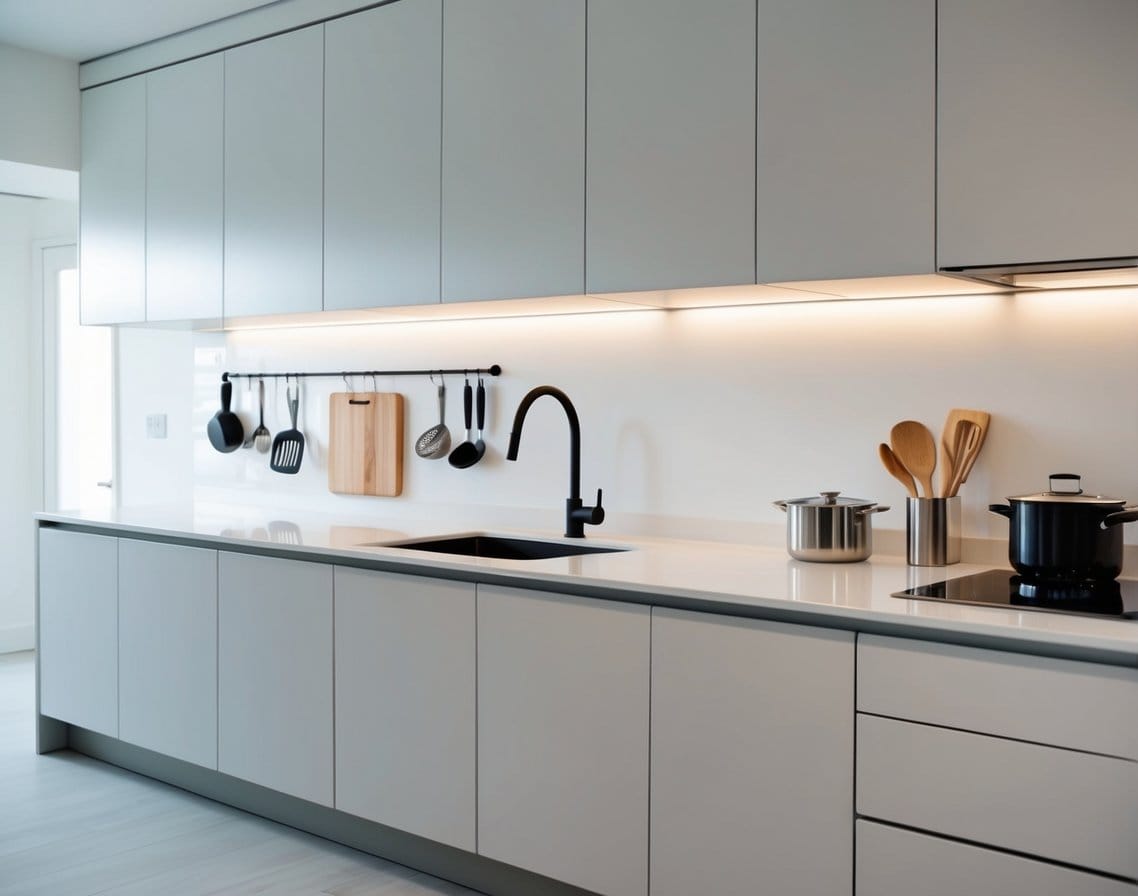
A streamlined kitchen focuses on essential items that serve multiple purposes while maintaining clean aesthetics. We prioritize quality tools and thoughtful design to create an efficient cooking space.
Kitchen Essentials for Functionality
Every minimalist kitchen needs high-quality kitchen tools that serve multiple purposes. We recommend investing in one excellent chef’s knife and one paring knife rather than a full set.
A carefully chosen set of three pots and pans works perfectly: a large stockpot, medium saucepan, and versatile skillet. Opt for stainless steel or cast iron for durability.
Open shelving keeps everyday items accessible. We suggest limiting shelf items to frequently used tools and attractive essentials like wooden spoons and measuring cups.
Core Kitchen Tools:
Wooden spoons and spatulas
One cutting board
Measuring cups and spoons
Multi-purpose mixing bowls
Quality vegetable peeler
Accentuating with Texture and Accents
Clean lines and functional elements define the minimalist aesthetic. Natural materials add warmth without cluttering the space.
Mixed metals create subtle visual interest. We love combining brushed nickel hardware with copper light fixtures or stainless appliances.
Choose textural elements carefully:
Smooth marble countertops
Matte cabinet finishes
Woven baskets for storage
Natural wood cutting boards
Textured tile backsplash
Integrating Innovative Kitchen Appliances
Essential appliances should earn their counter space through frequent use. A quality coffee maker, stand mixer, and food processor form the foundation of a well-equipped kitchen.

Hidden storage solutions keep occasional-use appliances accessible but out of sight. Consider pull-out drawer organizers or dedicated appliance cabinets.
Must-Have Small Appliances:
Multi-function food processor
Electric kettle
Hand mixer or stand mixer
Coffee maker
Toaster or toaster oven
Select appliances in matching finishes to maintain visual cohesion. Stainless steel offers timeless appeal and easy maintenance.
Tips for a Successful Minimalist Kitchen Design
Creating a minimalist kitchen design requires careful planning and attention to detail. Here are some tips to help you achieve a successful minimalist kitchen design:
Creating a Cohesive Look
To create a cohesive look in your minimalist kitchen, choose a limited color palette and stick to it. Select a few key materials, such as wood or stone, and use them consistently throughout the space. Consider using custom cabinetry to create a seamless look and reduce visual clutter. Finally, keep your countertops clear and your kitchen tools organized to maintain a clutter-free environment. By following these tips, you can create a minimalist kitchen design that is both functional and beautiful. Remember to prioritize simplicity, sustainability, and ease of use, and don’t be afraid to get creative with your design. With a little planning and attention to detail, you can create a minimalist kitchen that you’ll love spending time in.
The Impact of Minimalism In Kitchen Design
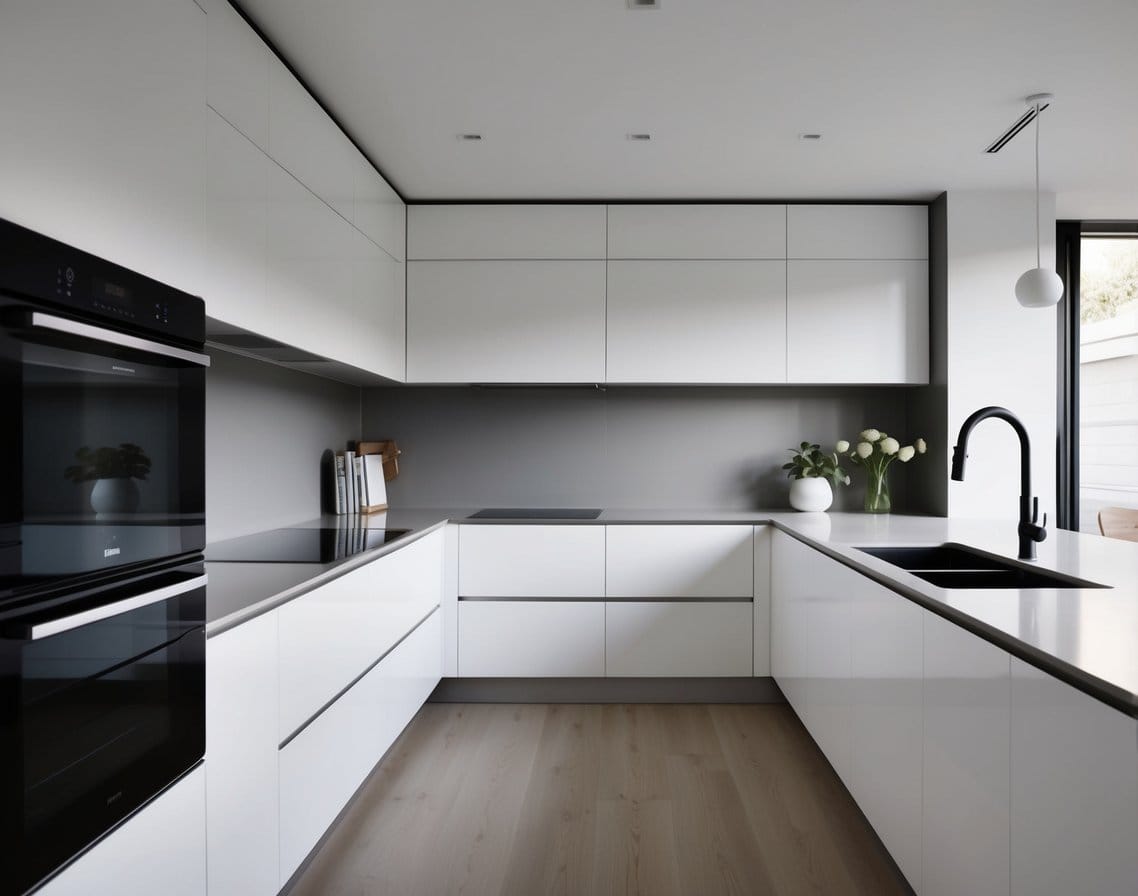
Minimalist kitchens create clean, functional spaces that blend style with practicality. Clean lines and simplified design make these spaces both beautiful and efficient.
Benefits of a Minimalist Kitchen
A minimalist kitchen helps us save money by focusing on essential items and quality materials that last longer. Spacious countertops with fewer decorative items make cleaning easier and faster.
The design creates more space through smart storage solutions and clutter-free surfaces. Light fixtures play a key role, with simple pendant lights or recessed lighting adding both function and style.
Key Features:
Clean lines and smooth surfaces
Built-in appliances
Hidden storage solutions
Natural light emphasis
Balancing Minimalism with Personal Style
We can mix old and new elements to create warmth in a minimalist space.
An all-white kitchen becomes more interesting with black accents or concrete countertops.
Modern minimalist kitchens embrace simplicity while maintaining character.
Sliding doors can hide pantry areas while adding architectural interest.
Design Elements to Consider:
Neutral color palettes
Natural materials
Statement lighting
Hidden storage solutions

